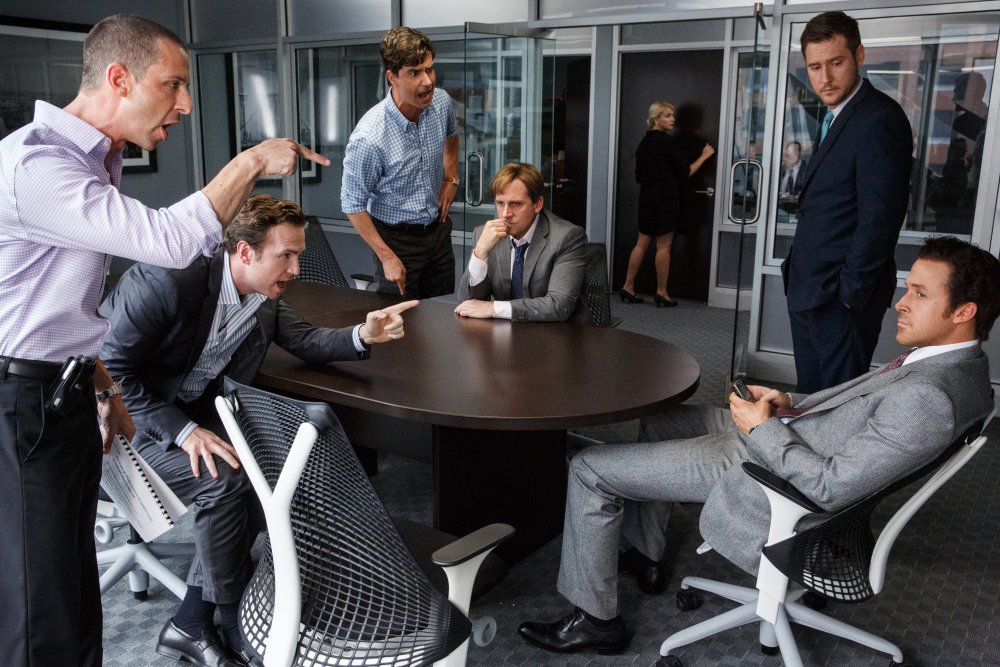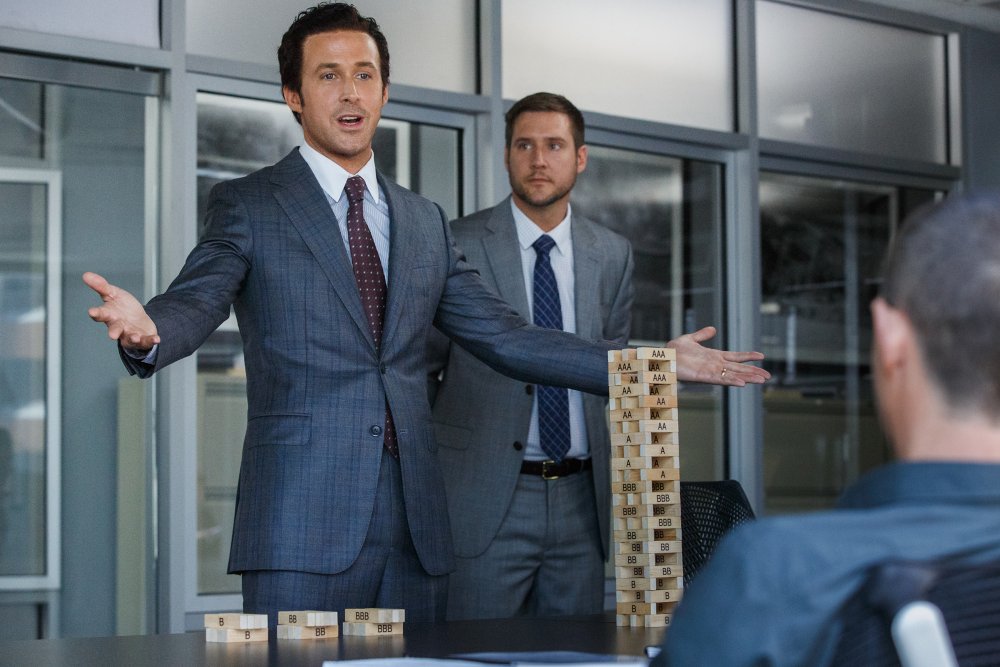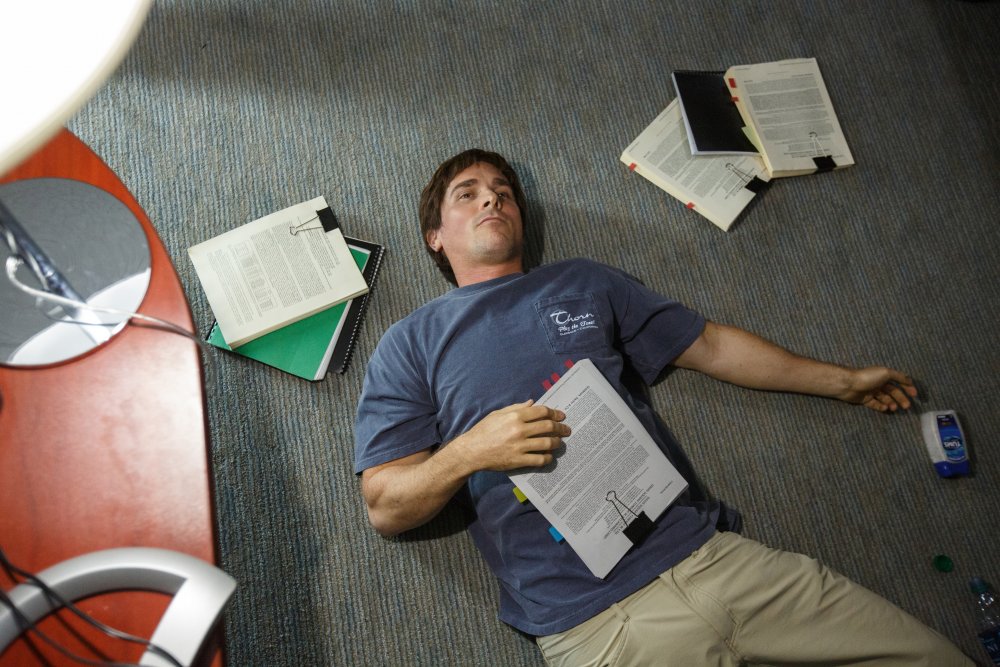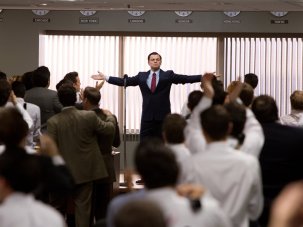As I write, global capital markets appear to be stabilising after another period of intense, and scary, stock-market volatility. This set the context for the arrival in Britain of Adam McKay’s The Big Short – a film about the American sub-prime mortgage meltdown, based on the book by Michael Lewis.
It could be argued that the movie is late, and even outdated; but it is not. It ends with the systemic failure of the system in 2007-09 – a crisis that has not gone away. On the contrary, it has rolled around from the US sub-prime housing market and Wall Street and on to the Eurozone, where Greece, Cyprus and Portugal were in the eye of the storm. Today financial volatility is centred on ‘emerging’ markets, in particular China, and has unnerved financial markets around the globe.
That the crisis is ongoing should come as no surprise. That a movie about fraudulent traders and a far-seeing hedge-fund manager should still seem relevant is as it should be, because the economic model that encouraged reckless and fraudulent practices in the market of dodgy mortgages is still with us. Indeed the model remains wholly intact. Very little has been done to ‘reform’ or transform the flawed design of an economic architecture that caused destruction of value on a global scale, bankrupted thousands of companies, led to millions of job losses and lowered incomes everywhere.
Indeed the model, while still fragile, is more prevalent than it was before. China, for example, is the latest adopter of the Western model. In January 2016 Chinese banks lent a record 2.51 trillion yuan ($385.40 billion) of new loans, surpassing expectations. Unsurprisingly, the country faces rising levels of unpayable private debts. And worldwide politicians are paying a price as popular discontent plays havoc with established parties.
Encouraged by the fact that little has changed and virtually no financier has been jailed, swaggering bankers and shadow bankers are as bumptious and arrogant as ever. HSBC’s bosses have just strong-armed Britain’s elected Conservative government to bow to their demands. These include the retraction of fiercer regulation, and the removal of a particularly troublesome regulator.

A tempest around the boardroom table of Steve Carell’s hedge-fund manager Mark Baum
The explanation for this ongoing arrogance is straightforward: the Wall Street and European banks that were bailed out now find themselves backed and protected by taxpayers and central bankers in the US, Germany and Japan. Today’s financial markets are no longer ‘free markets’ (if they ever were), risky for doughty financiers. Instead these marketeers are Too Big to Fail, Bail and Jail and Too Big to Prosecute. Their losses were largely socialised in the aftermath of the crisis. Since then central-bank largesse (guarantees against losses, QE and low interest rates) and political fear of another systemic crash means that their institutions are now effectively nationalised, even while they continue to privatise gains for shareholders and executives.
I liked the movie. A lot. I laughed – a lot. I also cried inside. The film is that complicated thing, a tragi-comedy. Its co-writer and director, Adam McKay, breaks the ‘fourth wall’ of movie-making not just by allowing characters to speak to camera; not just by insisting on ‘telling’ as well as ‘showing’ (which apparently movie schools prohibit) but also by refusing to patronise his audience.
Instead his film informs and explains. He makes certain the audience gets it, by using for example a Jenga tower to show how various tranches of mortgage-backed securities (MBS’s) – all held up by fraudulent rating agencies – stacked up, attracted large sums from careless investors and then toppled.
McKay ridicules Wall Street and its friends in the economics profession. He simultaneously plays to, then subverts the public’s obsession with celebrity, by getting Selena Gomez to explain synthetic collateralized debt obligations while Margot Robbie pops up in a bubble bath to cheekily define the subprime mortgage bond market. The film mocks patently absurd (and fraudulent) stuff like “interest-only negative-amortising adjustable-rate subprime mortgages” (i.e. interest-only mortgages very likely to be in default) and “100 percent floating-rate negative-amortising mortgages”, whereby borrowers can choose not to pay any interest at all – and then very likely default.

Jared Vennett (Ryan Gosling) displays his Jenga tower of mortgage-backed securities
These are the ‘assets’ that Wall Street bankers salivated over before the crisis broke. Bankers – or lenders – make big money from reckless borrowers. Careful, risk-averse borrowers are simply not lucrative, and in the run-up to the crisis were best avoided. No, Wall Street’s mortgage salesmen (who feature way down its food chain) preferred pole-dancers in dodgy strip clubs to Harvard-educated professionals. The movie’s pole-dancer (Heighlen Boyd) tells Mark Baum (Steve Carrell) that she owned five properties – all purchased on costly borrowed money. In this respect she is indeed a lender’s wet dream. Another is the not improbable borrower who took out a mortgage in his pet dog’s name and, while collecting rent from a tenant, defaulted on mortgage repayments – then evicted the tenant.
Even while laughing at the absurdity of these stories and lamenting the tragedy of evicted families, I groaned at the design flaws in the architecture of the financial system that permitted such excess. Like the structural-engineering design flaw that almost wiped out the skyscraper known as Citicorp Center, the economic model that underpins Wall Street excess is what makes otherwise intelligent market participants vulnerable to irrational and fraudulent conduct.
The fact is market people don’t get economics – just as the people using, or walking under a high-rise building like Citicorp Center don’t get structural engineering. Instead market people book micro trades all and every day and constantly watch for counterparty risk. The bigger picture – the macro picture – was and is the responsibility of often negligent regulators and economists, the ‘structural engineers’ of the system.
And if I have one regret about The Big Short it is just this: while it is both hilarious and tragic watching the conduct of those rocking the Jenga Towers of a flawed and fraudulent system, they are not the finance sector’s real villains. The real villains are the architects of the system, and they are not to be found on Wall Street. Instead they are located in the Ivory Towers of universities like Cambridge, Harvard and the Chicago School.
Telling their story might not be easy, but if anyone could do it, it would be Adam McKay.
-
The Digital Edition and Archive quick link
Log in here to your digital edition and archive subscription, take a look at the packages on offer and buy a subscription.






